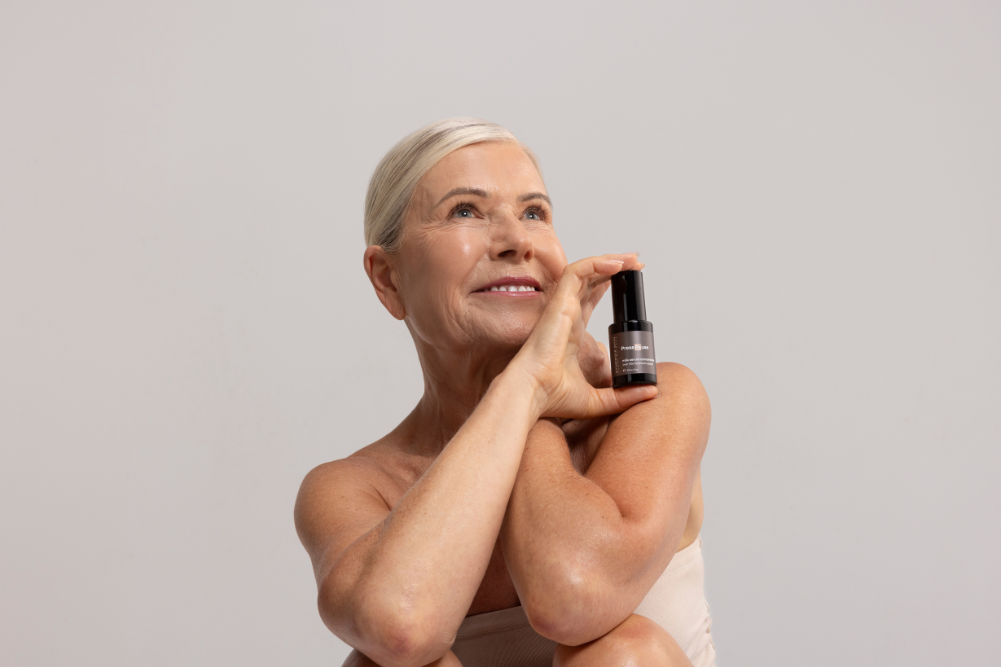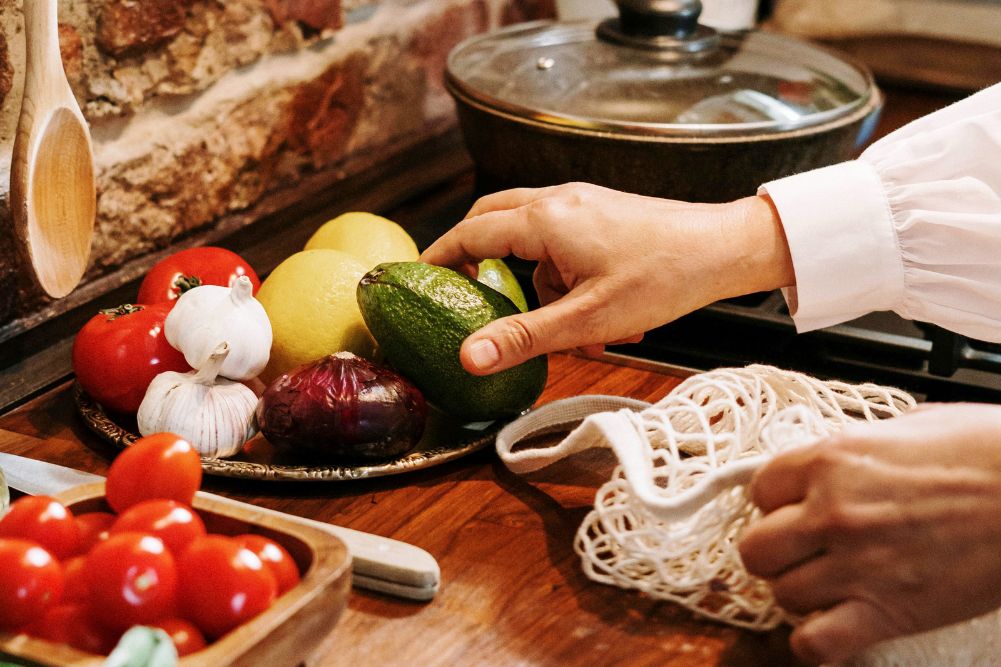Living the wabi sabi life
The Japanese have a knack for bringing ancient wisdom to the modern world, from wise proverbs to life-enhancing philosophies. There is ikigai, the method of finding your life purpose or reason for being, and shankankan, a philosophy which teaches the virtue of patience. The Japanese practice of repairing broken pottery with liquid gold is called kintsugi, teaching you to embrace your own flaws and imperfections. If you could absorb all these traditional zen ideas into one philosophy, it might just be wabi sabi.
Pronounced “wah-bi sah-bi”, wabi sabi is a concept from Japanese aesthetics that encourages us to see beauty in the “perfectly imperfect” and to accept the transient nature of life (of which the fleeting cherry blossom season is an apt analogy, the delicate flowers inevitably falling within weeks of blooming). Much like a sudden sense of nostalgia or an overwhelming emotion that you can’t quite explain, the concept is a heart-centred experience and its meaning differs for everyone. As such, there is no universal definition for wabi sabi in the Japanese language, making it impossible to translate.
The phrase itself is derived from two separate ideas. Beth Kempton, Japanologist and author of Wabi Sabi: Japanese Wisdom for a Perfectly Imperfect Life, explains: “Wabi is about finding beauty in simplicity, and a spiritual richness and serenity in detaching from the material world. Sabi is more concerned with the passage of time, with the way that all things grow and decay and how ageing alters the visual nature of those things. It’s less about what we see, and more about how we see.”
The philosophy can be traced as far back as the ninth century CE. Wabi sabi has its historical roots in the Japanese tea ceremony, where the ceremonial implements (such as rustic tea bowls) and teahouse surroundings reflected simplicity, natural materials and time-worn imperfections. The ancient aesthetic inspired a new way of Japanese living that’s very relevant for modern life, preaching patience, minimalism and authenticity. In a way, wabi sabi is an antidote to the fast-paced, consumption-driven ideals of the Western world, teaching us to forgo perfectionism and seek meaning beyond materialism.
Wabi sabi in the digital era
Much like house prices and TikTok, perfectionism is on the rise. A 2019 study led by clinical psychologist Simon Sherry found that perfectionism has increased substantially since 1990, and young people are more inclined to be perfectionists than ever before. As our digital and physical lives blur through social media, the pressure mounts to present a flawless (and often inauthentic) version of ourselves both online and in the real world. The price perfectionists pay? Toxic comparisons, low self-esteem, unrealistic expectations and frequent self-criticism.
The omnipresence of social media has also increased our appetite for materialism. As we’re constantly fed targeted streams of #ads and #sponcon, we’re more likely to buy those boots we once clicked on or purchase the skincare products our favourite Instagrammer swears by. It’s not called retail therapy without reason; each “add to cart” brings a false sense of happiness and success as we’re led to believe that acquiring new, on-trend possessions will boost our social status. According to Australia Post’s annual online spending report, Australians spent a record $62.3 billion online in 2021, a figure which continues to increase year on year. In a way, our addiction to consumerism comes full circle with our quest to present the “perfect” life.
Wabi sabi has been simmering in Japanese culture for centuries, but this enigma could also be the remedy we’ve been craving for our modern-day issues. Perhaps it’s time we tap into the benefits of living the wabi sabi life. “The principles that underlie wabi sabi can teach us life lessons about letting go of perfectionism and accepting ourselves just as we are,” Kempton writes. “They give us tools for escaping the chaos and material pressures of modern life, so we can be content with less. And they remind us to look for beauty in the everyday, feeling gratitude for life itself.”
Embrace a wabi sabi lifestyle
To create a life that reflects the values of wabi sabi, you need to overhaul your mindset, daily habits and surroundings. At its core, the notion requires you to see things differently; to view imperfect, asymmetrical things as even more unique for their defects; to appreciate beauty in the impermanence of nature and how things decay, rot and age. Ultimately, to adopt a wabi sabi mentality means understanding that we too are creations of nature, rather than being separate from our surroundings or exempt from natural timelines.
If we accept this wabi sabi perspective, then we can start to relinquish perfectionist traits. By viewing ourselves as part of the natural world, we no longer need to reach such impractical standards. For instance, we do not criticise a eucalyptus tree for its zigzag markings, made by the moth grubs burrowing between layers of bark. Nor do we judge the moss growing unevenly across a boulder or the moon as it transitions from crescent to full. So why should we be so harsh on ourselves? With a wabi sabi mindset, we learn to flout societal standards of beauty and instead become content with our imperfect yet authentic selves.
As Kempton writes in her book, “The true beauty of wabi sabi lies not in things, but in the very nature of life itself. We can nurture it with our willingness to notice details and cultivate delight. And we experience it when we are living our most authentic, most inspired versions of our lives.” Take inspiration from this ancient Japanese philosophy to bring wabi sabi into your life where you most need it. Here are a few ideas.
Practise self-acceptance
The first step to developing a wabi sabi mindset is to practise self-acceptance. This means appreciating flaws or missteps — whether that’s in yourself, your career, relationships or objects — as real and genuine. In a nutshell: be willing to accept things as they are. This means rejecting the pursuit of perfection and letting go of classical Western ideals of symmetrical beauty, the “perfect” body, the dream partner and material success.
There are many ways to foster self-acceptance. Start by keeping a gratitude journal and make a new entry every day. Brew a cup of coffee, sit down with your journal and shift your attention to all the things you love about yourself and your life — from your friendship with your local barista to the scars that remind you of your resilience. Meditation is another method that inspires an optimistic mindset and boosts your self-esteem. Carving out time to sit with yourself can change your relationship with your thoughts, helping you to abandon negative ideas and come to terms with your vulnerabilities. Even just 10 minutes of daily meditation can improve your inner confidence.\
Cultivate a calm home
Traditional Japanese interior design can be summed up in one word: zen. Timeless Japanese-style interiors are created with a less-is-more approach, embracing minimalism, natural and raw materials, organic shapes and an abundance of light. This style stands in sharp contrast to most modern architecture and contemporary interiors, which often involve clean lines, mass-produced furniture and synthetic materials.
To create a wabi sabi home, keep home decor and furnishings to a minimum. Declutter your living spaces and put objects in storage when they aren’t in use to convey a sense of simplicity. Japanese tidying expert Marie Kondo writes in her book The Life-Changing Magic of Tidying Up: The Japanese Art of Decluttering and Organizing: “From the moment you start tidying, you will be compelled to reset your life. Many people carry this type of negative self-image for years, but it is swept away the instant they experience their own perfectly clean space.”
Her cult “KonMarie” method of cleaning might have introduced the idea
of decluttering to the Western world, but her process and philosophy is closely aligned with wabi sabi. The difference? While the KonMarie method strives for perfection in organisation, there is nothing perfect about a wabi sabi home. Instead, celebrate the beautiful patina on your time-worn leather lounge and embrace asymmetry in design. Above all, be inspired by nature: employ an understated, neutral colour palette and bring the outside in with hand-picked foliage.
Repurpose and upcycle
Salvaging your possessions is a wonderful way to incorporate wabi sabi into your home. When you drop a teacup or break a photo frame, piece it back together and find beauty in the healed cracks. If you need something new, choose handmade or vintage objects over store-bought. Pieces with personality are much more interesting than manufactured homewares. In her book, Kondo writes that an element of wabi sabi is “Appreciating and caring for your belongings — and carefully mending beloved items instead of replacing them with something new that doesn’t necessarily spark joy.”
Live by the seasons
Wabi sabi celebrates the passage of time, and how time manifests itself through objects, people and the world around us. Learn to appreciate time rather than fight against it: observe the seasons as they come and go, taking the time to notice vibrant autumn leaves, the scent of cut grass in summer or the bite of a winter breeze. Pay attention to the produce calendar and cook seasonal dishes using local (instead of imported) fruit and vegetables.
Unfortunately, society is consumed by youth and desperate to slow the ageing process. In 2020, the global anti-ageing market (comprising everything from skin-tightening creams to anti-wrinkle botox) was estimated to be worth over $84 billion. Instead of seeing wrinkles and sunspots as blemishes, retrain your thoughts to accept them as signifiers of a happy life spent under the sun. “Wabi sabi is an intuitive response to beauty that reflects the true nature of life,” Kempton writes.
Slow down and be present
At the heart of a wabi sabi lifestyle is patience. Instead of glorifying business and hustle culture, wabi sabi recognises the joys of simple, slow and natural living. “Take your time. There really is no desperate hurry. When we constantly pursue perfection, our life speeds up. We make hasty decisions and snap judgements. Wabi sabi offers an opportunity to pause, reflect, check in with yourself and move from there. You’ll likely feel relieved and make better choices,” Kempton suggests.
As Kempton writes: “Put simply, wabi sabi gives you permission to be yourself. It encourages you to do your best but not make yourself ill in pursuit of an unattainable goal of perfection. It gently motions you to relax, slow down and enjoy your life. And it shows you that beauty can be found in the most unlikely of places, making every day a doorway to delight.”
How to simplify your life
- Disconnect from your phone. There’s a variety of features on our phones that allow us to restrict our usage, from “Do Not Disturb” mode to time limits. Disconnecting allows us to be more present and less stressed. Before bedtime, stay away from devices as the blue light interferes with our sleep patterns.
- Start a daily meditation practice. Meditation teaches you to focus on your breathing, slow down and increase self-awareness.
- Embrace nature. Spending time outdoors is so restorative that doctors are even issuing “green prescriptions”. Exercise outdoors where possible, enjoy nature walks and make getting outside a daily habit.\
- Connect with loved ones. Set your phone aside and give your full attention to your friends, family and partner. Strong relationships lead to lower anxiety, strengthen your immune system and elevate your mood.
- Cultivate a healthy work–life balance. Set boundaries between the office and home by giving yourself time to relax and unplug. Nurturing your relationships, body and mind outside work reduces stress and sickness while increasing happiness.








